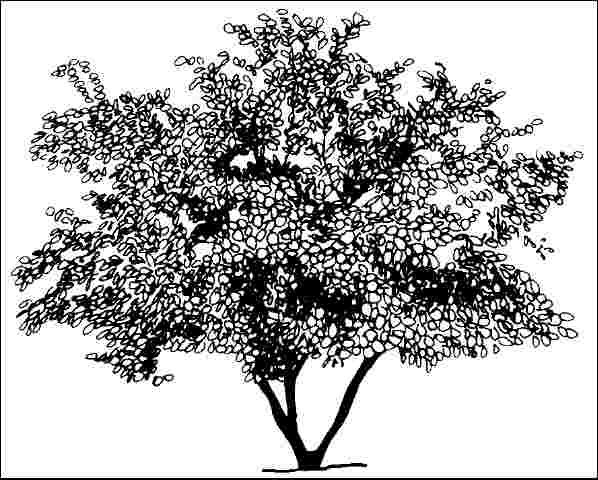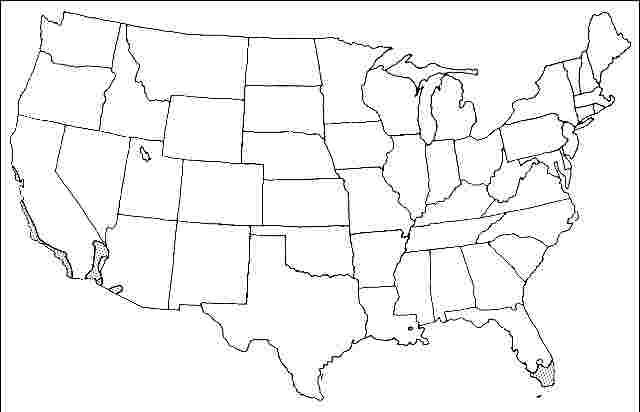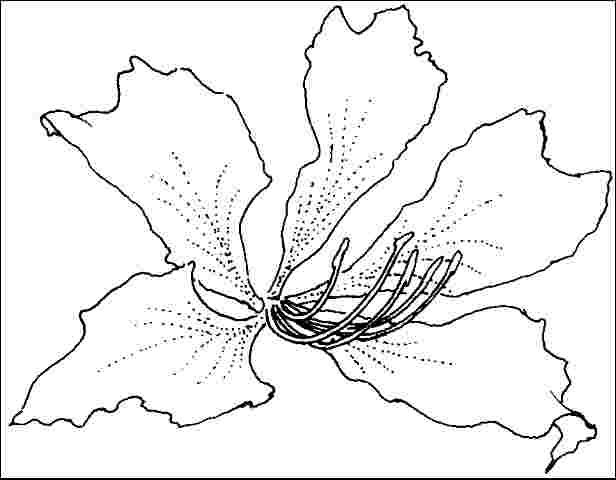Introduction
One of the hardiest of the bauhinias, Brazilian orchid tree or cow's foot is a deciduous to semievergreen tree reaching 25 to 30 feet in height with interesting twisted ascending branches that droop at the ends, an often-leaning trunk, and large, bilobed, dark green leaves. The beautiful, white, 3- to 4-inch-wide, orchid-like blooms appear in abundance from spring through summer and are followed by flat, dark brown seed pods. Brazilian orchid tree makes a spectacular vase-shaped specimen, shade, or patio tree, or fits well into a mixed shrubbery border. The trees vary in form when young from one individual to the next, so uniform plantings are difficult to achieve. Trees become more uniform and symmetrical as they grow older. Probably too messy and sensitive to alkaline soil for a residential or downtown street tree, but would grow well and be suited for a median strip where the debris would be washed away and less noticeable.

General Information
Scientific name: Bauhinia forficata
Pronunciation: bah-HIN-ee-uh for-fih-KAY-tuh
Common name(s): Brazilian orchid tree, cow's foot
Family: Fabaceae
USDA hardiness zones: 10A through 11 (Figure 2)
Origin: not native to North America
Invasive potential: not considered a problem species at this time, may be recommended (North, Central, South)
Uses: deck or patio; specimen; highway median; shade

Description
Height: 25 to 30 feet
Spread: 25 to 35 feet
Crown uniformity: symmetrical
Crown shape: vase, round, spreading
Crown density: dense
Growth rate: moderate
Texture: medium
Foliage
Leaf arrangement: alternate (Figure 3)
Leaf type: simple
Leaf margin: cleft, lobed
Leaf shape: orbiculate
Leaf venation: palmate
Leaf type and persistence: broadleaf evergreen, evergreen
Leaf blade length: 2 to 4 inches
Leaf color: green
Fall color: no color change
Fall characteristic: not showy

Flower
Flower color: white/cream/gray
Flower characteristics: very showy

Fruit
Fruit shape: elongated, pod or pod-like
Fruit length: 6 to 12 inches
Fruit covering: dry or hard
Fruit color: brown
Fruit characteristics: does not attract wildlife; showy; fruit/leaves a litter problem
Trunk and Branches
Trunk/bark/branches: branches droop; not showy; typically multi-trunked; no thorns
Pruning requirement: needed for strong structure
Breakage: susceptible to breakage
Current year twig color: brown
Current year twig thickness: thin, medium
Wood specific gravity: unknown
Culture
Light requirement: full sun
Soil tolerances: clay; sand; loam; acidic; slightly alkaline; well-drained
Drought tolerance: high
Aerosol salt tolerance: moderate
Other
Roots: not a problem
Winter interest: no
Outstanding tree: yes
Ozone sensitivity: unknown
Verticillium wilt susceptibility: unknown
Pest resistance: resistant to pests/diseases
Use and Management
Orchid trees benefit from some pruning early in their life to increase branching and to produce a form that will be suited for most landscapes. Left unpruned, many trees are beautiful, forming multiple trunks and branches close to the ground, which is fine for specimen use in a lawn area or other open-space landscapes. Purchase trees with one trunk for parking lot or other urban landscapes where vehicular clearance will be necessary. Be sure to train branches so they will grow up before they spread out. If this is not done, lower branches will droop toward the ground and they may have to be removed, disfiguring the tree. Orchid trees drop fruit, small branches, and leaves periodically, so some people consider it a messy tree. But regularly fertilized in an acidic soil, orchid tree is a wonderful flowering tree.
Grow in full sun or high, shifting pine shade. Orchid tree thrives in any well-drained soil, but will show interveinal chlorosis (yellowing) on the leaves when grown in alkaline soils. Potassium deficiency shows up as necrosis, magnesium deficiency as chlorosis. Although tolerant of some drought, Brazilian orchid tree should receive some afternoon shade, or irrigation, in hot, dry weather to prevent the blooms from shriveling up. The flowers are followed by many brown, woody, 12-inch-long seed pods, which fill the tree and could be considered unattractive on the tree in the winter and a nuisance when they drop.
Propagation is by seed, suckers, layerings, or cuttings.
Pests and Diseases
No pests or diseases are of major concern. Potassium, magnesium and micronutrient deficiencies are common. Orchid tree seeds itself into the landscape.